| Unaffiliated (2) Federalist (1) Democratic-Republican (4) Democratic (15) Whig (4) Republican (19) Naitional Union (2) |
| Presidency[a] |
Preses |
Prior office[b] |
Pairty[c] |
Term[d] |
Vice Preses |
| 1 |
Aprile 30, 1789
[e]
–
Mairch 4, 1797 |
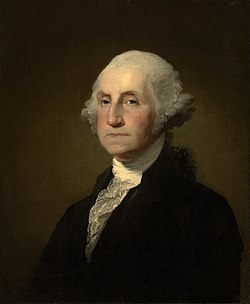 |
George Washington
1732–1799
(Lived: 67 years)
[1][2][3] |
Commander-in-Chief
o the
Continental Airmy
(1775–1783) |
|
Unaffiliatit
[4] |
(1788–89)
1
(1789) |
John Adams
[f][g] |
(1792)
2
(1793) |
| 2 |
Mairch 4, 1797
–
Mairch 4, 1801 |
 |
John Adams
1735–1826
(Lived: 90 years)
[5][6][7] |
1st
Vice Preses o the Unitit States |
|
Federalist |
(1796)
3
(1797) |
Thomas Jefferson
[h] |
| 3 |
Mairch 4, 1801
–
Mairch 4, 1809 |
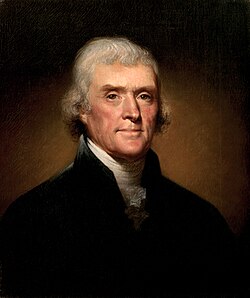 |
Thomas Jefferson
1743–1826
(Lived: 83 years)
[8][9][10] |
2nt
Vice Preses o the Unitit States |
|
Democratic-
Republican |
(1800)
4
(1801) |
Aaron Burr
Mairch 4, 1801 – Mairch 4, 1805 |
(1804)
5
(1805) |
George Clinton
Mairch 4, 1805 – Mairch 4, 1809 |
| 4 |
Mairch 4, 1809
–
Mairch 4, 1817 |
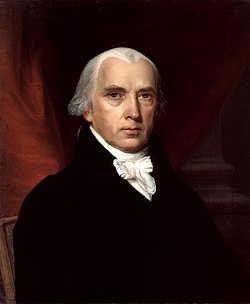 |
James Madison
1751–1836
(Lived: 85 years)
[11][12][13] |
5t
Unitit States Secretar o State
(1801–1809) |
|
Democratic-
Republican |
(1808)
6
(1809) |
George Clinton
Mairch 4, 1809 – Aprile 20, 1812
(Died in office) |
Office vacant
(Balance of Clinton's term) |
(1812)
7
(1813) |
Elbridge Gerry
Mairch 4, 1813 – November 23, 1814
(Died in office) |
Office vacant
(Balance of Gerry's term) |
| 5 |
Mairch 4, 1817
–
Mairch 4, 1825 |
 |
James Monroe
1758–1831
(Lived: 73 years)
[14][15][16] |
7t
Unitit States Secretar o State
(1811–1817) |
|
Democratic-
Republican |
(1816)
8
(1817) |
Daniel D. Tompkins |
(1820)
9
(1821) |
| 6 |
Mairch 4, 1825
–
Mairch 4, 1829 |
 |
John Quincy Adams
1767–1848
(Lived: 80 years)
[17][18][19] |
8t
Unitit States Secretar o State
(1817–1825) |
|
Democratic-
Republican |
(1824)
10
(1825) |
John C. Calhoun |
| 7 |
Mairch 4, 1829
–
Mairch 4, 1837 |
 |
Andrew Jackson
1767–1845
(Lived: 78 years)
[20][21][22] |
U.S. Senator (Cless 2) frae Tennessee
(1823–1825) |
|
Democratic |
(1828)
11
(1829) |
John C. Calhoun
[i]
Mairch 4, 1829 – December 28, 1832
(Resigned from office) |
Office vacant
(Balance of Calhoun's term) |
(1832)
12
(1833) |
Martin Van Buren
Mairch 4, 1833 – Mairch 4, 1837 |
| 8 |
Mairch 4, 1837
–
Mairch 4, 1841 |
 |
Martin Van Buren
1782–1862
(Lived: 79 years)
[23][24][25] |
8t
Vice Preses o the Unitit States |
|
Democratic |
(1836)
13
(1837) |
Richard Mentor Johnson |
| 9 |
Mairch 4, 1841
–
Aprile 4, 1841
(Died in office) |
 |
William Henry Harrison
1773–1841
(Lived: 68 years)
[26][27][28] |
Unitit States Meenister tae Colombie
(1828–1829) |
|
Whig |
(1840)
14
(1841)
(1841)
[j] |
John Tyler
(Succeedit tae presidency) |
| 10 |
Aprile 4, 1841
[k]
–
Mairch 4, 1845 |
 |
John Tyler
1790–1862
(Lived: 71 years)
[29][30][31] |
10t
Vice Preses o the Unitit States |
|
Whig
Aprile 4, 1841 – September 13, 1841 |
Office vacant |
|
Unaffiliated
September 13, 1841 – Mairch 4, 1845
[l] |
| 11 |
Mairch 4, 1845
–
Mairch 4, 1849 |
 |
James K. Polk
1795–1849
(Lived: 53 years)
[32][33][34] |
9t
Govrenor o Tennessee
(1839–1841) |
|
Democratic |
(1844)
15
(1845) |
George M. Dallas |
| 12 |
Mairch 4, 1849
–
Julie 9, 1850
(Died in office) |
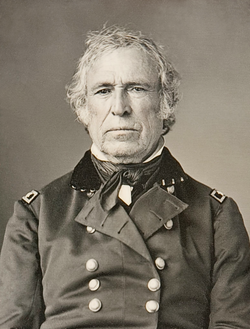 |
Zachary Taylor
1784–1850
(Lived: 65 years)
[35][36][37] |
Major General o the 1st Infantry Regiment
Unitit States Airmy
(1846–1849)
(No prior elected office) |
|
Whig |
(1848)
16
(1849)
(1850)
[j] |
Millard Fillmore
(Succeedit tae presidency) |
| 13 |
Julie 9, 1850
[m]
–
Mairch 4, 1853 |
 |
Millard Fillmore
1800–1874
(Lived: 74 years)
[38][39][40] |
12t
Vice Preses o the Unitit States |
|
Whig |
Office vacant |
| 14 |
Mairch 4, 1853
–
Mairch 4, 1857 |
 |
Franklin Pierce
1804–1869
(Lived: 64 years)
[41][42][43] |
Brigadier General o the 9t Infantry
Unitit States Airmy
(1847–1848) |
|
Democratic |
(1852)
17
(1853) |
William R. King
Mairch 4 – Aprile 18, 1853
(Died in office) |
Office vacant
(Balance of King's term) |
| 15 |
Mairch 4, 1857
–
Mairch 4, 1861 |
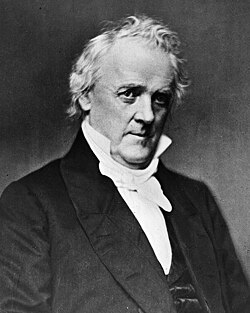 |
James Buchanan
1791–1868
(Lived: 77 years)
[44][45][46] |
Unitit States Meenister to the
Court of St James's
(1853–1856) |
|
Democratic |
(1856)
18
(1857) |
John C. Breckinridge |
| 16 |
Mairch 4, 1861
–
Aprile 15, 1865
(Died in office) |
 |
Abraham Lincoln
1809–1865
(Lived: 56 years)
[47][48][49] |
U.S. Representative for Illinois' 7t Destrict
(1847–1849) |
|
Republican
(National Union)
[n] |
(1860)
19
(1861) |
Hannibal Hamlin
Mairch 4, 1861 – Mairch 4, 1865 |
|
(1864)
20
(1865)
(1865)
[j] |
Andrew Johnson
Mairch 4 – Aprile 15, 1865
(Succeedit tae presidency) |
| 17 |
Aprile 15, 1865
–
Mairch 4, 1869 |
 |
Andrew Johnson
1808–1875
(Lived: 66 years)
[50][51][52] |
16t
Vice Preses o the Unitit States |
|
National Union
Aprile 15, 1865 – c. 1868 |
Office vacant |
|
Democratic
c. 1868 – Mairch 4, 1869
[o] |
| 18 |
Mairch 4, 1869
–
Mairch 4, 1877 |
 |
Ulysses S. Grant
1822–1885
(Lived: 63 years)
[53][54][55] |
Commanding General o the U.S. Airmy
(1864–1869)
(No prior elected office) |
|
Republican |
(1868)
21
(1869) |
Schuyler Colfax
Mairch 4, 1869 – Mairch 4, 1873 |
(1872)
22
(1873) |
Henry Wilson
Mairch 4, 1873 – November 22, 1875
(Died in office) |
Office vacant
(Balance of Wilson's term) |
| 19 |
Mairch 4, 1877
–
Mairch 4, 1881 |
 |
Rutherford B. Hayes
1822–1893
(Lived: 70 years)
[56][57][58] |
29t & 32nt
Govrenor o Ohio
(1868–1872 & 1876–1877) |
|
Republican |
(1876)
23
(1877) |
William A. Wheeler |
| 20 |
Mairch 4, 1881
–
September 19, 1881
(Died in office) |
 |
James A. Garfield
1831–1881
(Lived: 49 years)
[59][60][61] |
U.S. Representative for Ohio's 19t Destrict
(1863–1881) |
|
Republican |
(1880)
24
(1881)
(1881)
[j] |
Chester A. Arthur
(Succeedit tae presidency) |
| 21 |
September 19, 1881
[p]
–
Mairch 4, 1885 |
 |
Chester A. Arthur
1829–1886
(Lived: 57 years)
[62][63][64] |
20t
Vice Preses o the Unitit States |
|
Republican |
Office vacant |
| 22 |
Mairch 4, 1885
–
Mairch 4, 1889 |
 |
Grover Cleveland
1837–1908
(Lived: 71 years)
[65][66] |
28t
Govrenor o New York
(1883–1885) |
|
Democratic |
(1884)
25
(1885) |
Thomas A. Hendricks
Mairch 4 – November 25, 1885
(Died in office) |
Office vacant
(Balance of Hendricks' term) |
| 23 |
Mairch 4, 1889
–
Mairch 4, 1893 |
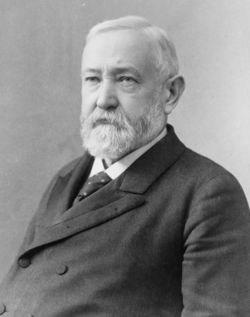 |
Benjamin Harrison
1833–1901
(Lived: 67 years)
[67][68][69] |
U.S. Senator (Cless 1) frae Indiana
(1881–1887) |
|
Republican |
(1888)
26
(1889) |
Levi P. Morton |
| 24 |
Mairch 4, 1893
–
Mairch 4, 1897 |
 |
Grover Cleveland
1837–1908
(Lived: 71 years)
[65][66] |
22nt
President o the Unitit States
(1885–1889) |
|
Democratic |
(1892)
27
(1893) |
Adlai Stevenson |
| 25 |
Mairch 4, 1897
–
September 14, 1901
(Died in office) |
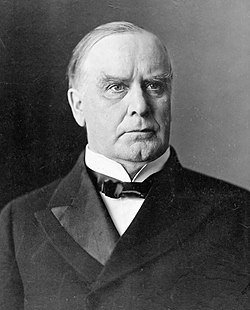 |
William McKinley
1843–1901
(Lived: 58 years)
[70][71][72] |
39th
Govrenor o Ohio
(1892–1896) |
|
Republican |
(1896)
28
(1897) |
Garret Hobart
Mairch 4, 1897 – November 21, 1899
(Died in office) |
Office vacant
(Balance of Hobart's term) |
(1900)
29
(1901)
(1901)
[j] |
Theodore Roosevelt
Mairch 4 – September 14, 1901
(Succeedit tae presidency) |
| 26 |
September 14, 1901
–
Mairch 4, 1909 |
 |
Theodore Roosevelt
1858–1919
(Lived: 60 years)
[73][74][75] |
25t
Vice Preses o the Unitit States |
|
Republican |
Office vacant
September 14, 1901 – March 4, 1905 |
(1904)
30
(1905) |
Charles W. Fairbanks
Mairch 4, 1905 – Mairch 4, 1909 |
| 27 |
Mairch 4, 1909
–
Mairch 4, 1913 |
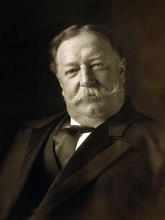 |
William Howard Taft
1857–1930
(Lived: 72 years)
[76][77][78] |
42nt
Unitit States Secretar o War
(1904–1908) |
|
Republican |
(1908)
31
(1909) |
James S. Sherman
Mairch 4, 1909 – October 30, 1912
(Died in office) |
Office vacant
(Balance of Sherman's term) |
| 28 |
Mairch 4, 1913
–
Mairch 4, 1921 |
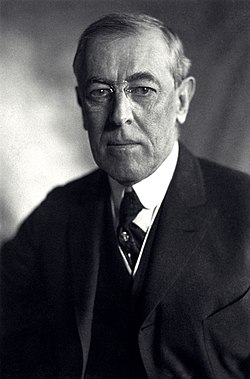 |
Woodrow Wilson
1856–1924
(Lived: 67 years)
[79][80][81] |
34t
Govrenor o New Jersey
(1911–1913) |
|
Democratic |
(1912)
32
(1913) |
Thomas R. Marshall |
(1916)
33
(1917) |
| 29 |
Mairch 4, 1921
–
August 2, 1923
(Died in office) |
 |
Warren G. Harding
1865–1923
(Lived: 57 years)
[82][83][84] |
U.S. Senator (Cless 3) frae Ohio
(1915–1921) |
|
Republican |
(1920)
34
(1921)
(1923)
[j] |
Calvin Coolidge
(Succeedit tae presidency) |
| 30 |
August 2, 1923
[q]
–
Mairch 4, 1929 |
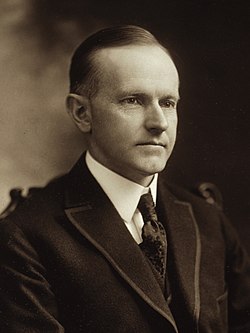 |
Calvin Coolidge
1872–1933
(Lived: 60 years)
[85][86][87] |
29t
Vice Preses o the Unitit States |
|
Republican |
Office vacant
August 2, 1923 – March 4, 1925 |
(1924)
35
(1925) |
Charles G. Dawes
Mairch 4, 1925 – Mairch 4, 1929 |
| 31 |
Mairch 4, 1929
–
Mairch 4, 1933 |
 |
Herbert Hoover
1874–1964
(Lived: 90 years)
[88][89][90] |
3rd
Unitit States Secretary of Commerce
(1921–1928)
(No prior elected office) |
|
Republican |
(1928)
36
(1929) |
Charles Curtis |
| 32 |
Mairch 4, 1933
–
Aprile 12, 1945
(Died in office) |
 |
Franklin D. Roosevelt
1882–1945
(Lived: 63 years)
[91][92][93] |
44t
Govrenor o New York
(1929–1932) |
|
Democratic |
(1932)
37
(1933) |
John Nance Garner
Mairch 4, 1933 – Januar 20, 1941
[r] |
(1936)
38
(1937) |
(1940)
39
(1941) |
Henry A. Wallace
Januar 20, 1941 – Januar 20, 1945 |
(1944)
40
(1945)
(1945)
[j] |
Harry S. Truman
Januar 20 – Aprile 12, 1945
(Succeedit tae presidency) |
| 33 |
Aprile 12, 1945
–
Januar 20, 1953 |
 |
Harry S. Truman
1884–1972
(Lived: 88 years)
[94][95][96] |
34t
Vice Preses o the Unitit States |
|
Democratic |
Office vacant
April 12, 1945 – January 20, 1949 |
(1948)
41
(1949) |
Alben W. Barkley
Januar 20, 1949 – Januar 20, 1953 |
| 34 |
Januar 20, 1953
–
Januar 20, 1961 |
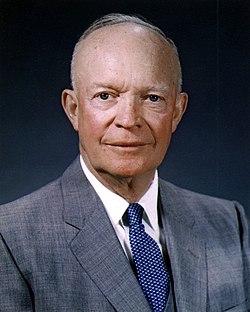 |
Dwight D. Eisenhower
1890–1969
(Lived: 78 years)
[97][98][99] |
Supreme Allied Commander Europe
(1949–1952)
(No prior elected office) |
|
Republican |
(1952)
42
(1953) |
Richard Nixon |
(1956)
43
(1957) |
| 35 |
Januar 20, 1961
–
November 22, 1963
(Died in office) |
 |
John F. Kennedy
1917–1963
(Lived: 46 years)
[100][101][102] |
U.S. Senator (Cless 1) frae Massachusetts
(1953–1960) |
|
Democratic |
(1960)
44
(1961)
(1963)
[j] |
Lyndon B. Johnson
(Succeedit tae presidency) |
| 36 |
November 22, 1963
–
Januar 20, 1969 |
 |
Lyndon B. Johnson
1908–1973
(Lived: 64 years)
[103][104] |
37t
Vice Preses o the Unitit States |
|
Democratic |
Office vacant
November 22, 1963 – January 20, 1965 |
(1964)
45
(1965) |
Hubert Humphrey
Januar 20, 1965 – Januar 20, 1969 |
| 37 |
Januar 20, 1969
–
August 9, 1974
(Resigned from office) |
 |
Richard Nixon
1913–1994
(Lived: 81 years)
[105][106][107] |
36t
Vice Preses o the Unitit States
(1953–1961) |
|
Republican |
(1968)
46
(1969) |
Spiro Agnew
Januar 20, 1969 – October 10, 1973
(Resigned from office) |
(1972)
47
(1973)
(1974)
[j] |
Office vacant
October 10 – December 6, 1973 |
Gerald Ford
December 6, 1973 – August 9, 1974
(Succeedit tae presidency) |
| 38 |
August 9, 1974
–
Januar 20, 1977 |
 |
Gerald Ford
1913–2006
(Lived: 93 years)
[108][109][110] |
40t
Vice Preses o the Unitit States |
|
Republican |
Office vacant
August 9 – December 19, 1974 |
Nelson Rockefeller
December 19, 1974 – Januar 20, 1977 |
| 39 |
Januar 20, 1977
–
Januar 20, 1981 |
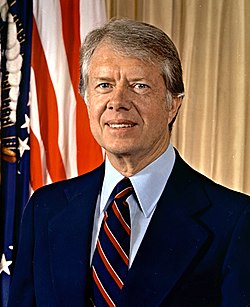 |
Jimmy Carter
1924–2024
(Lived: 100 years)
[111][112][113] |
76t
Govrenor o Georgie
(1971–1975) |
|
Democratic |
(1976)
48
(1977) |
Walter Mondale |
| 40 |
Januar 20, 1981
–
Januar 20, 1989 |
 |
Ronald Reagan
1911–2004
(Lived: 93 years)
[114][115][116] |
33rd
Govrenor o California
(1967–1975) |
|
Republican |
(1980)
49
(1981) |
George H. W. Bush |
(1984)
50
(1985) |
| 41 |
Januar 20, 1989
–
Januar 20, 1993 |
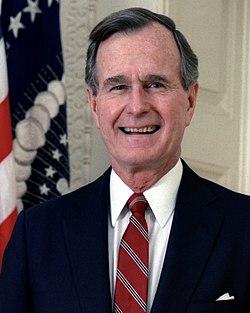 |
George H. W. Bush
1924–2018
(Lived: 94 years)
[117][118][119] |
43rd
Vice Preses o the Unitit States |
|
Republican |
(1988)
51
(1989) |
Dan Quayle |
| 42 |
Januar 20, 1993
–
Januar 20, 2001 |
 |
Bill Clinton
Born 1946
(79 year auld)
[120][121][122] |
40t & 42nt
Govrenor o Arkansas
(1979–1981 & 1983–1992) |
|
Democratic |
(1992)
52
(1993) |
Al Gore |
(1996)
53
(1997) |
| 43 |
Januar 20, 2001
–
Januar 20, 2009 |
 |
George W. Bush
Born 1946
(79 year auld)
[123][124] |
46t
Govrenor o Texas
(1995–2000) |
|
Republican |
(2000)
54
(2001) |
Dick Cheney |
(2004)
55
(2005) |
| 44 |
Januar 20, 2009
–
Januar 20, 2017 |
 |
Barack Obama
Born 1961
(64 year auld)
[125][126] |
U.S. Senator (Cless 3) frae Illinois
(2005–2008) |
|
Democratic |
(2008)
56
(2009) |
Joe Biden |
(2012)
57
(2013) |
| 45 |
Januar 20, 2017
–
Januar 20, 2021 |
 |
Donald Trump
Born 1946
(79 year auld)
[127][128] |
Chairman o
The Trump Organization
(1971–2017)
(Na prior electit office) |
|
Republican |
(2016)
58
(2017) |
Mike Pence |
| 46 |
Januar 20, 2021
–
Incumbent |
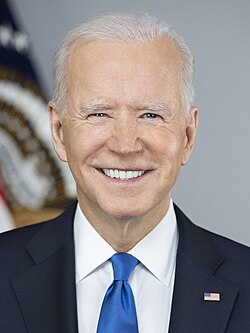 |
Joe Biden
Born 1942
(82 year auld)
|
47th
Vice Preses o the Unitit States |
|
Democratic |
(2020)
58
(2021) |
Kamala Harris |












































